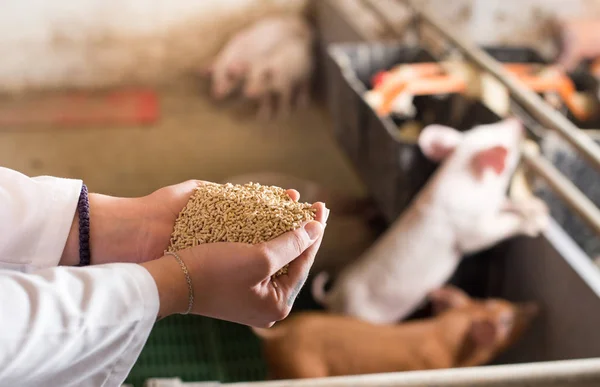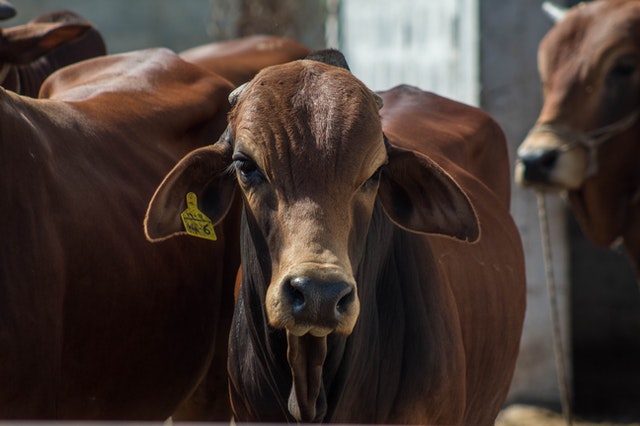Raising pigs for meat production can be profitable, but feed expenses often account for up to 70% of the total costs. What if you could cut down on these expenses while ensuring your pigs get high-quality, balanced nutrition? Formulating your own homemade pig feed is not only a smart way to save money, but it also gives you complete control over what your pigs are eating.
In this guide, we’ll walk you through everything you need to know about making pig feed at home, including tried-and-tested formulas that can help boost growth rates and meat quality
Why Make Your Own Pig Feed?
- Significant Cost Savings: Feed expenses can be drastically reduced, particularly if you’re using locally available grains and food waste. Farmers report savings of 30-50% by making their own pig feed, compared to buying commercial alternatives.
- Nutritional Control: Homemade feed allows you to ensure that your pigs are getting a balanced diet that promotes faster growth, strong bones, and improved health without relying on synthetic additives. You can modify the formulas based on their age, health, and growth stage.
- Waste Reduction: Food scraps, especially vegetable and fruit leftovers from your kitchen, can be repurposed into pig feed. This helps reduce waste while contributing essential nutrients like vitamins and fiber.
- Customization: Different pigs, depending on their growth stage—whether piglets, porkers, or baconers—have varying dietary needs. Homemade feed allows you to customize the nutrient content for each group, something that’s not always possible with pre-mixed commercial feeds.
- Avoid Harmful Additives: Many commercial feeds contain growth hormones, antibiotics, and synthetic chemicals. Homemade feed offers a natural alternative, reducing the likelihood of long-term health issues in your pigs and producing cleaner, safer meat for consumption.
Related
How to Make Homemade Chicken Feed- Best Recipes
How to Make Homemade Dairy Feed for More Milk: A Guide
Understanding Pig Nutritional Requirements
To produce optimal homemade feed, it’s important to understand the basic dietary needs of pigs:
- Energy Sources: Pigs need carbohydrate-rich ingredients like corn, wheat, and barley for energy. Energy is essential for daily activity and growth.
- Protein: Protein, primarily sourced from soybean meal or fishmeal, is crucial for muscle development. Pigs, especially in their growth stages, require around 15-18% protein in their diet.
- Fiber: Fiber helps with digestion and keeps pigs fuller longer. Wheat bran or rice bran is often added to pig feed to provide this.
- Minerals and Vitamins: Calcium, phosphorus, and salt are essential minerals. Calcium ensures healthy bones, while salt helps maintain electrolyte balance. Minerals can be added in the form of limestone, calcium carbonate, or bone meal.
- Fats: Healthy fats, such as those from sunflower seeds or vegetable oil, improve feed efficiency and meat quality by providing essential fatty acids.
Essential Ingredients for Homemade Pig Feed
Here are some of the most common ingredients that are easy to source and nutritionally beneficial for pigs:
- Corn: A high-energy, carbohydrate-rich grain that’s a staple in pig diets. It’s easily digestible and promotes growth.
- Soybean Meal: A top protein source that supports muscle development, ensuring pigs grow faster and achieve market weight sooner.
- Wheat Bran: A low-cost ingredient that adds bulk and fiber to the feed, aiding digestion.
- Sunflower Meal: High in protein and healthy fats, sunflower meal contributes to better meat quality and energy metabolism.
- Skimmed Milk or Whey: Adds protein, calcium, and other essential nutrients, especially beneficial for younger pigs (weaners).
- Salt: Provides sodium for maintaining healthy electrolyte levels in the body.
- Limestone or Calcium Carbonate: An important source of calcium for bone development.
Optional Add-Ins:
- Vegetable Scraps: Repurposing kitchen leftovers such as carrots, potato skins, and leafy greens can provide extra vitamins and fiber.
- Nuts and Acorns: These can be used seasonally to provide extra healthy fats and nutrients.
- Sweet Potato Vines: A great source of fiber, vitamins, and antioxidants. When used as silage, they can serve as a sustainable feed option.
Proven Homemade Pig Feed Formulas
These feed formulas cater to different stages of pig growth, ensuring that your pigs receive the right nutrients at every phase of development.
1. Growing-Finishing Pig Feed (100 kg batch).
| Ingredient | Amount (kg) |
|---|---|
| Corn | 50 |
| Soybean Meal | 20 |
| Wheat Bran | 15 |
| Sunflower Meal | 10 |
| Skimmed Milk/Whey | 5 |
| Salt | 0.5 |
| Limestone | 0.5 |
This formula supports pigs as they grow from weaners to porkers, ensuring optimal muscle development and weight gain.
Process:
- Mix Dry Ingredients: Combine the dry ingredients in a large mixing drum or container.
- Add Liquid Ingredients: Slowly incorporate the skimmed milk or whey, mixing thoroughly to ensure even distribution.
- Storage: Store in an airtight container in a cool, dry area to prevent spoilage.
2. Starter Pig Feed (50 kg batch)
| Ingredient | Amount (kg) |
|---|---|
| Corn | 25 |
| Soybean Meal | 15 |
| Wheat Bran | 5 |
| Sunflower Seeds | 3 |
| Salt | 0.5 |
| Calcium Source | 1.5 |
Formulated for piglets transitioning from mother’s milk, this feed promotes healthy early-stage growth.
Process:
- Grind the Grains: Grind the grains and seeds into smaller particles for easier digestion by young pigs.
- Mix Thoroughly: Ensure the ingredients are evenly distributed for consistent feeding.
- Introduce Gradually: Begin feeding small amounts, increasing the quantity as the piglets’ digestive systems adjust.
3. Breeding Feed for Sows and Boars (100 kg batch)
| Ingredient | Amount (kg) |
|---|---|
| Corn | 30 |
| Soybean Meal | 20 |
| Barley | 10 |
| Vegetable Scraps | 5 |
| Salt | 0.5 |
| Calcium Source | 1.5 |
This formula caters to the specific needs of breeding pigs, ensuring reproductive health and stamina.
Process:
- Combine the Ingredients: Mix all dry and wet ingredients together in a large container.
- Monitor Consumption: Adjust the feed quantities based on the sow’s or boar’s weight, reproductive stage, and health.
Feeding Recommendations
- Weaners: Start with 200g of feed daily and increase by 50g every day as they grow.
- Porkers (Growing pigs): By 14 weeks, they should be consuming 1.4kg of feed per day, split into three meals.
- Baconers (Market-ready pigs): Increase feed intake to 2.5-3kg daily, depending on their weight and growth rate.
- Breeding Sows: Adjust feed depending on reproductive stages, adding extra protein during gestation and lactation.
Challenges of Homemade Pig Feed
While homemade pig feed offers significant benefits, there are also challenges:
- Nutritional Imbalance: Without proper knowledge, you risk not meeting the pigs’ nutritional needs, which can lead to poor growth rates or health problems.
- Storage: Homemade feed lacks preservatives, making it more prone to spoilage. Proper storage in airtight containers is essential.
- Labor-Intensive: The process of sourcing ingredients, mixing, and grinding can be time-consuming and labor-intensive for larger farms.
- Ingredient Quality Variability: Locally sourced ingredients can vary in quality, affecting the consistency of the feed.
However, these issues can be mitigated with careful planning, regular monitoring of pig health, and tweaking the feed formulas as necessary.
Read Next: Can Pig Farming in Kenya Make You Rich?
Conclusion
Homemade pig feed is a game-changer for farmers looking to reduce feed costs, ensure better meat quality, and promote sustainable farming practices. With the right balance of ingredients and attention to the pigs’ nutritional needs, you can create high-quality feed that matches or even surpasses commercial alternatives. Start small, monitor your pigs’ progress, and adjust the formulas as needed to achieve optimal results.
Do you have any questions or feedback on these formulas? Let us know in the comments below!



